- This feature was published in RAIL 772 on April 15 2015
- Watch video 'Class 37 cab ride'
Locomotive-hauled trains may be making something of a comeback in the UK, but in East Anglia they never really left.
But how the locomotives are used is changing. Class 47s, first introduced into the region on passenger trains in 1965, are being replaced by Class 37/4s that were first introduced to the region five years earlier!
The reliability of the ‘47s’, which are hired from Direct Rail Services, has forced the change. And it is one that requires Abellio Greater Anglia, which operates the locomotives, to re-train a select band of drivers.
Locomotive-hauled coaching stock (LHCS) has been used regularly in Anglia since 2011, when a shortage of diesel multiple units forced what was then National Express East Anglia to hire top-and-tail Class 47s from DRS to haul NXEA Mk 3s between Norwich and Great Yarmouth.
This lasted until late 2011, and was then sporadic the following year. It returned with a vengeance in 2013, and hasn’t really left since. Currently, if there is a shortage of DMUs (and because of overhauls, refurbishments and failures this is often the case), LHCS is used between Norwich, Great Yarmouth and also Lowestoft. There were also Summer Saturday trains to Yarmouth.
With enough Class 37/4s now available, AGA will use DRS ‘37s’ from mid-April. Initially they will operate in the same top-and-tail fashion as the ‘47s’ are at the moment, unless DRS sends a rake of through-wired Mk 2s in time. Until then, a driver will be needed in each ‘37’, although once the modified Mk 2s arrive, that will be reduced to one driver.
The majority of drivers in the Mixed Traction Link (the Link that currently drives the ‘47s’) are experienced men who have already driven ‘37s’ on the main line. There are 18 in the Link.
One, Kevin Brown, has worked on the railway since 1973 and laments today’s lack of variety. Another, Mick Lloyd, drove them until 26 years ago. They remember the locomotives, but cannot drive them on the main line unless their traction cards are renewed in time. Mark Middleton is the ‘new boy’ of the Link - he drives Class 37s on the North Norfolk Railway (where he is Driver, Guard, Inspector and diesel organiser), but not on the main line. Therefore he must learn the same as the others.
Training is provided by DRS staff when possible, and if not by senior driver managers. It takes three days, the first of which is classroom-based and involves a tutorial on the ‘37’ (on March 16 it is conducted by DRS Traincrew Leader Russell Piggott).
Once that is completed, the drivers (four on March 16) are taken from Norwich station, where 37419 Carl Haviland 1954-2012 is stabled, to Crown Point station, where Piggott walks them through a PowerPoint presentation.
This details all the mechanical aspects of the locomotives, and the differences between the sub-classes within the DRS fleet. Although only Class 37/4s are scheduled for the training, it is possible that ‘37/0s’, ‘37/5s’ and ‘37/6s’ could also be used. This has been approved by AGA. Another possibility is 37423 Spirit of the Lakes - its cab interior is different to DRS’ other ‘37/4s’, with its controls akin to ‘37/6s’.
AGA is expected to have three dedicated locomotives, although neither Piggott nor AGA could confirm their identities. On March 16, Driver Manager Mark Holmes said that 37419 was not expected to be one, whereas Piggott said he was under the impression that it was to be fitted with DRA (Driver’s Reminder Appliance), which is an AGA group safety standard requirement.
This is a defence against SPADs (Signals Passed at Danger). Drivers are supposed to ’set it’ every time they stop at a station or red signal. Once set, they are unable to obtain power. Once they receive ‘right away’ from the Conductor and have a proceed aspect on the signal in front of them, or once the Conductor gets a proceed aspect when restarting from a red signal not at a station, they reset the DRA, check the aspect of the signal once more and it applies power. It is not a major task to fit to the locomotive - indeed, it only requires one switch.
Holmes is passed to drive ‘37s’ and is involved in the training, although not today. He tells RAIL that as he understands it, the format for the trains will be Class 37s operating in push-pull format with a Driving Brake Standard Open (DBSO) by the end of the summer. They will be based at Norwich Crown Point. DRS will provide two sets of Mk 2s, but only one will be in traffic, with the other acting as a maintenance spare.
On the second day (March 17) the four men undergo handling training, which involves light locomotive trips to Cromer and Lowestoft. In traffic the locomotives won’t serve Cromer, but the route is used because there are free paths available.
Each driver gets one trip. Once that is completed, they undergo an exam that takes around an hour (Holmes describes it as like a tick sheet), and then they are passed to drive ‘37s’. However, they need a third day’s training on brake handling with the carriages (Holmes expected the first set to arrive during April).
This week has four days of training, with Lloyd and Middleton carrying out their classroom work on March 18 and light locomotive trips on March 19.
Holmes says that driving the Class 37s is a different challenge to the ‘47s’, but not a massive one. And he’s impressed with the work DRS has had done on the ‘37/4s’.
“They have had a total re-wire - thousands spent on them. They need to be fitted with fire-suppressant equipment and DRA.” He adds that because of the nature of the contract, DRS covers the cost of fitting the Driver’s Reminder Appliance): “They have to meet our standards.”
There will be two fitters to maintain the locomotives and carriages (currently there is one, supplied by Arlington Fleet Services). Maintenance will be carried out on Sundays.
Typically, traction competency will last for six months before it is considered lapsed and the drivers must re-train. However, all drivers in the Link will drive ‘37s’ regularly, so that will not be a problem. Most have already driven them before, but not in the past six months - hence the training.
Climbing into 37419’s cab, Piggott is there to show the drivers around and to show the trainees how the locomotives work. He gives them a tour of the cab and then of the engine room, followed by a walk around the locomotive. “The main difference is the Westinghouse brake,” he tells them.
DRS ‘37s’ also have a panic button fitted that calls the emergency services, because of the nature of their work (they haul nuclear trains). During training, this button was pressed by accident (we promised to keep the name of who did it a secret), so nobody was called out.
Once Piggott has shown the drivers the cab, he takes them into the cramped engine room. He points out the various areas and equipment, including the two alternators fitted, and recounts what to do in the event of a failure. He highlights equipment such as main line circuit breakers, which he says shouldn’t be used.
He speaks in easy to understand terminology: “If you remember them of old, there used to be equipment that looked like a washing machine. That went in the refurbishment in the 1980s.”
Piggott also warns of the problems that can be caused by a temperature gauge: “If the alternator goes over temperature, then the light goes out and it shuts down.”
He adds that if anyone considers the inside of 37419 to be dirty, then the inside of the ‘47s’ is much worse, and dishes out more advice: “If the circuit breaker trips it’s a failure, so take it steady.”
Piggott is not teaching the trainees to ‘suck eggs’, but merely imparting his experience. He learned to drive at Thornaby in 1988, and suggests that it may even have been with 37419. Certainly he drove it during his BR career. He’s worked for DRS in two spells, as well as for Central Trains and GB Railfreight.
After the tour of the engine room, we head to Norwich Crown Point for the classroom work. This involves a PowerPoint presentation by Piggott, who takes the trainees around the ‘37s’ in more detail. Time for a cup of coffee - learning how to work the coffee machine seems a far more daunting challenge than learning how to drive the Type 3s!
The presentation includes a history of the ‘37s’, and Piggott tells the trainees: “They are dated from 1960, but they are not old and decrepit. I’m sure you’ll like them.” He mentions the differences between the sub-classes within the DRS fleet, and highlights how Class 37/7s cannot go to Sheringham, for example, because of their higher route availability caused by additional weight.
He explains various technical aspects of the locomotives: their electric train heat index is 30; they have Napier banks; there are two alternators (the main and auxiliary - the main powers the traction motors, and the auxiliary powers the pumps and the feed for the main alternator). He also mentions the differences between the ‘37/6s’ and the rest of the DRS fleet, but doubts they will be sent to AGA.
“You will get used to the locomotives and how they handle,” he briefs them, before giving an example: “The throttle response is awful at times. They do erupt. But it will come to you.”
Piggott also reassures the trainees: “These refurbished ‘37s’ came out in 1985. I have never had them do badly. I was at Thornaby when they came out. They were good. I am driving the same locomotives - in some cases the same locomotive - now that I did at Thornaby.”
Next comes the fault finding presentation. Piggott tells them: “High water won’t cause a failure… if you have a red hot day you can open the bodyside door inwards… with two locomotives and three carriages you won’t notice if there is low power… if the water level is lower than a quarter it won’t start…”
He then offers his own advice: “I will show you how to go through the ‘prep sheets’. If you keep it with you, that’s OK. A good ‘prep sheet’ eliminates 99% of all faults.”
He says it takes 20 minutes to prepare a locomotive for traffic, but that he thinks AGA will allow an hour for the top-and-tail ‘37s’.
After lunch, Piggott takes the team back to 37419, where they themselves will prepare the locomotive and look for faults. If there aren’t any, they will start it up. He goes through the ‘prep sheet’ with them again, before they head off into 37419.
“They do not have to follow it to the exact. They must do it enough to make sure it works,” he explains, adding that the course was designed by DRS at Carlisle Kingmoor. “This is the best way to do it,” he believes, with this practicality far more useful than sitting in a classroom.
While Piggott is talking, voices can be heard from within 37419 as the trainees look for faults and check with each other.
Piggott seizes the moment to show off his prize-winning Montego van, painted in British Rail yellow, complete with BR arrow. It dates from 1992, so wouldn’t have carried that logo, but he’s immensely proud if it. “One of only 40,” he grins.
After around ten minutes, the trainees are confident enough to try and fire 37419 up. It starts first time. In fact, between them, they have only one question: where are the compressor cocks? The answer is simple… they don’t have one.
With the ‘37’ ticking over, stationary brake tests are carried out. Everything is as it should be. Piggott walks them around the locomotive, and within a short time they are done. “I maybe expected more of a quiz, but to be fair they know their job,” he says.
Back at Norwich, it’s time for the practical driving test. There’s a change of plan, with the ‘37’ running to Ipswich rather than Cromer and Lowestoft, which means it will run at higher speeds (75mph is the top speed for a light locomotive). It is booked to leave Norwich at 1010 and return from Ipswich at 1116. Mick Lloyd will drive it Up to Ipswich, with Mark Middleton driving it Down to Norwich. AGA’s Minder Driver Tim Thetford is the man in charge of training.
With coffee duly acquired (a ‘must’ for Middleton), the road is given for Lloyd to take the ‘37’ south. Middleton lets the handbrake off and clambers out to manually set the points from the Royal Dock at Norwich. There is a debate regarding which platform the ‘37’ will use at the Suffolk town.
Thetford explains that the maximum speed at which the ‘37s’ will operate on the branches will be 60mph. However, they will be used for empty coaching stock moves to Ilford, which will require 75mph running.
He explains the difference between the Westinghouse brakes on the ‘37s’ and the Davis & Metcalfe ones on the ‘47s’: “They are more responsive.”
Before he could train the other drivers, he underwent a traction refresher course with Piggott, and is full of praise: “He’s the most knowledgeable, I think. He’s superb.”
Middleton, who began as a guard in the mid-1990s, says it is the first time he has been on a Class 37 “this way” since 1999. Working for Anglia Railways, he was hired to EWS for ballast jobs, which used ‘37s’.
Thetford tells Lloyd and Middleton that when they return, they will sit their written exam.
This trip, he says, “is about familiarisation”, adding: “It’s good to get the basics. Mark has the experience, for example, but not on the main line. Mick and I had them 26 years ago. We thought that was it, when they went.”
Lloyd laughs at this. He has the ‘37’ powering along nicely, and chips in that he’s surprised how smooth the ride quality is.
There are green lights all the way south. The undulating nature of the route isn’t obvious as a passenger, but is very noticeable when travelling in the cab.
As Middleton is passed to drive 37032 on the North Norfolk Railway, what are the differences between that and 37419?
“The alternators and safety equipment on this,” he replies. A Welshman by birth, he’s looking forward to getting his hands on the ‘37s’. It’s the first new traction he has learned since Class 90s and Mk 3s were introduced onto the Great Eastern Main Line more than ten years ago.
Route knowledge kicks in as the drivers approach Haughley Junction. They ask about a temporary speed restriction that seemingly has been in place for a long time, to their disgust. Here we are brought to a stand as two Class 170s pass, bound for Ipswich and Cambridge respectively.
We arrive at Ipswich at 1103, and are put into Platform 1. It’s time to swap ends (the question of whether people want coffee is asked - Middleton says “yes” before the question is finished).
Lloyd will travel back in the rear cab. He says of his driving trip: “It is pretty much the same as before. They have got that familiar burble.”
At 1116 we set off, and Middleton accelerates once 37419 is on the Down Main. The ‘37’ doesn’t seem as noisy inside the cab as they do outside, but there is still a distinguishable roar. The acceleration pushes you into your seat, and Middleton is enjoying himself: “I have driven them for 18 years, and I have been looking forward to this,” he grins.
Thetford says: “All the guys have to do training with the stock. I will do that training with them. We have to do a proving trip. I think that it will be like the 15x fleet. I can run the ‘47s’ to ‘156’ timings now, but the ‘37s’ accelerate quicker.”
At Diss, the signaller phones the ‘37’ to ask Middleton where he wants to take 37419. Norwich is the answer and we continue on our way, but not before Middleton accelerates a bit.
Like Piggott, Thetford believes getting out on the locomotives is best: “You can learn a lot in the classroom, but nothing replaces seeing it in situ. The equipment on any diesel electric locomotive is similar. There are a lot of things they all have, but it’s where they are located.”
He says he prefers the ‘37s’ to ‘47s’: “I think the ‘47s’ were mass produced, and towards the end I am not sure they were put together as well. They are draughty, whereas a lot more thought went into the ‘37s’.
“I don’t care for horsepower. You can get 2,750hp from a ‘47’ or 1,750hp from a ‘37’, but we don’t need that for what we will do with them. They will all do what we need.”
Thetford isn’t an enthusiast, but he does name his favourite class: “I spent most of my career on ‘31s’ in my early days. I have a soft spot for them. They were warm, and did what you wanted them to.”
At 1155 we arrive at Trowse Junction. Middleton contacts the signaller again, to wait for permission to enter the station. We are heading into Platform 6, which surprises both Thetford and Middleton (it turns out there is a fault with the Royal Dock). Middleton drives it into Platform 6, which is where I get off.
Lloyd then takes the locomotive out of the station, before they head off for their exams. They both pass.
Watch video 'Class 37 cab ride'

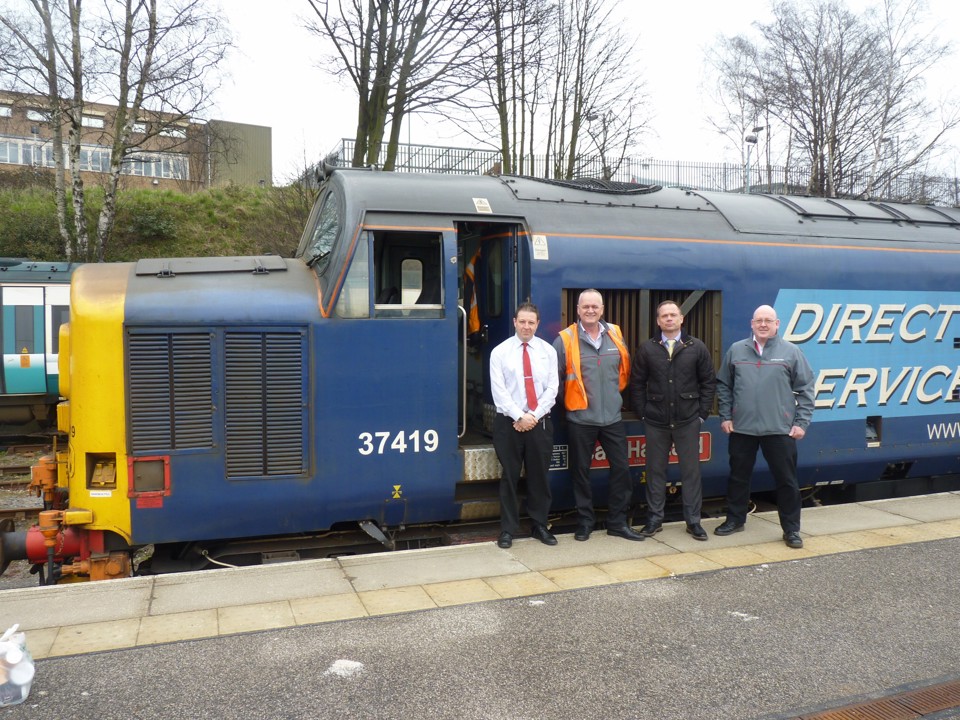
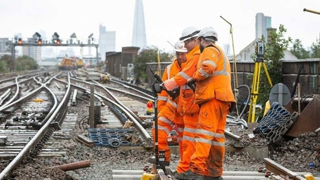
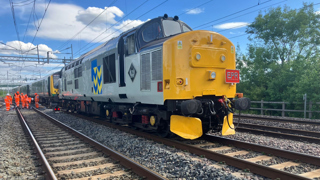
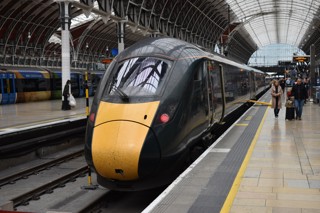
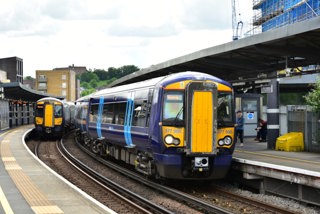
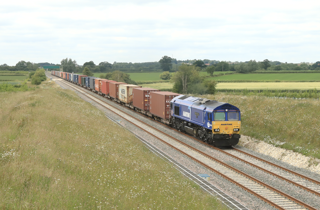










AndrewJG8918 - 30/09/2019 04:17
Thanks for your hard work on providing a temporary service in East Anglia Class 37. Very sad to see you go.